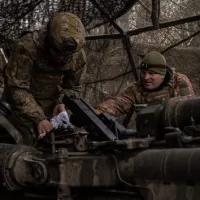
LilliDay/iStockBy DR. HASSAL LEE, ABC News
(NEW YORK) — Amid the sprawling coronavirus pandemic, scientists around the world also have been keeping a close watch on another potentially dangerous virus: swine flu.
Through close surveillance of influenza viruses in pigs from 2011 to 2018 in China, experts have discovered a potentially pandemic-causing virus predominant in swine populations since at least 2016.
So far, many experts, including America’s leading infectious diseases expert, Dr. Anthony Fauci, have said that while it’s important to keep a close eye on it, the virus is not “an immediate threat.”
Other scientists have chimed in, urging the public not to panic about a second global outbreak.
“There is no reason for panic and no imminent danger,” tweeted Florian Krammer, microbiologist at the Icahn School of Medicine.
There is a lot of media attention to the swine flu PNAS study from China. Everybody is sensitized now because of COVID-19. And it is important to keep an eye on these viruses. But there is no reason for panic and no imminent danger. https://t.co/9m0DY0sFQf
— Florian Krammer (@florian_krammer) June 30, 2020
In a similar vein, Dr. Angela Rasmussen, a virologist at Columbia tweeted, “What we should NOT do is freak out and expect that another flu pandemic is imminent.”
We can step up surveillance efforts to see if it appears that this virus is increasingly adapting to human hosts or if it is associated with any cases of severe disease. We can study it to see what might increase its ability to infect, transmit, and cause disease in people.
— Dr. Angela Rasmussen (@angie_rasmussen) June 29, 2020
Professor Carl Bergstrom at the University of Washington, an outspoken critic of misleading science and author of the book Calling Bullshit: The Art of Skepticism in a Data-Driven World has voiced that we are not facing the start of “a double pandemic” of COVID-19 and influenza, despite news headlines that have been suggesting otherwise.
We can step up surveillance efforts to see if it appears that this virus is increasingly adapting to human hosts or if it is associated with any cases of severe disease. We can study it to see what might increase its ability to infect, transmit, and cause disease in people.
— Dr. Angela Rasmussen (@angie_rasmussen) June 29, 2020
The original paper, published in PNAS on June 29, reported the identification of a recently emerged “reassortant” flu virus in pigs that contains genetic material from the H1N1 2009 pandemic strain. It’s becoming increasingly common among swine in China.
The virus has infected some farmers who tend to these pigs. However, there’s little evidence the virus can pass from human to human, until which this newly identified virus may have pandemic “potential” but is unlikely to cause a large outbreak.
Dr. Chad Petit, an assistant professor at the University of Alabama at Birmingham, used a “lock and key” analogy in explaining the virus strain during an interview with ABC News.
We can imagine the virus is a “key” that needs to fit the “lock” on human cells in order to enter them more efficiently and cause robust infections. This paper currently suggests that the viral key can open the cellular lock, but not very efficiently. Unless that efficiency ramps up, Petit explained, larger outbreaks are extremely unlikely.
“Until human-to-human spread of this virus occurs, we needn’t jump the gun on [developing] yet another vaccine,” Dr. Len Horovitz, a pulmonary specialist at Lenox Hill Hospital, told ABC News in an interview.
Even as experts agree there isn’t an imminent danger, are there additional precautions worth taking in the meantime?
Again, experts agree: Careful monitoring of the virus in pigs and human workers in the swine industry should continue, as well as limiting human exposure to animals possibly carrying the virus.
“Careful monitoring of these viruses with pandemic potential,” Petit added, “will drastically improve our preparedness and outcome for any future pandemic.”
Hassal Lee, a neuroscience Ph.D. and student doctor at the University of Cambridge, is a contributor to the ABC News Medical Unit.
Copyright © 2020, ABC Audio. All rights reserved.















